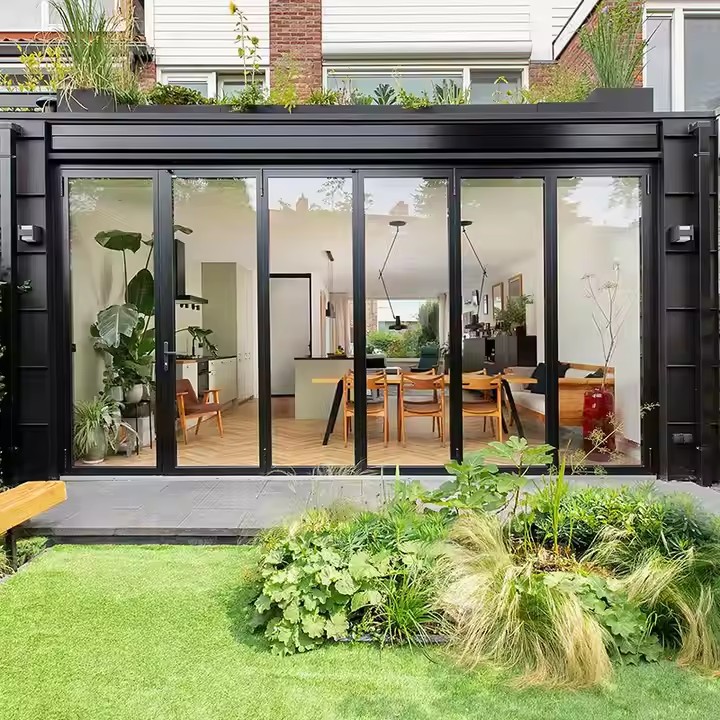- Understanding Chinese Aesthetic and Its Fit with Folding Door Design
Chinese design is based on the idea of harmony between humans and nature. It focuses on three main things:
Traditional shapes and patterns
Space that feels open and closed at the same time
Natural materials and textures
Folding doors, which are used to divide or connect rooms, can be designed with these ideas in mind.
Shapes:
Traditional Chinese doors like wooden lattice doors, screen doors, and moon gates inspire the shape of folding doors. For example, lattice patterns are not only beautiful but also functional, and screen doors are flexible—just like folding doors.

Space:
Chinese style likes spaces that are separated but still connected. Folding doors that open and close in layers can create a similar effect to walking through a traditional Chinese garden, where the view changes as you move.
Materials:
Chinese design uses wood, bamboo, and silk. These natural materials fit well with folding doors. Wood makes a space feel warm, bamboo is flexible and light, and traditional craftsmanship like carving or wood joinery adds beautiful details.
- Modern Design Inspired by Traditional Elements
Lattice Patterns:
Traditional lattice designs can be simplified into modern geometric shapes. For example, a cracked-ice pattern can be laser-cut into metal or strong boards. These designs can be combined with glass, so the door lets in light when closed and becomes see-through when opened.
Symbolic Door Shapes:
Shapes like the moon gate (a round opening) or octagon doors can be redesigned into folding doors. For example, six folding panels can each have a curved edge, and together they form an octagon when closed—creating both beauty and meaning. Curved roof-like edges can also be added to the top of the door to look like traditional roofs.
Opening Styles with Cultural Meaning:
Folding doors can open in ways that reflect traditional customs. For example, the middle two panels can open first, then the others, to copy the way big gates in old houses opened. Another idea is a zigzag folding door that feels like walking through a garden hallway.
- Using Traditional Materials and Techniques in a Modern Way
Materials with Cultural Feel and Modern Performance:
Improved Solid Wood:
Use Chinese woods like elm or walnut, and protect them with coatings so they don’t warp. For example, use old elm for the frame and apply clear oil to keep the natural look while making it water-resistant.
Mixing Bamboo and Metal:
Thin bamboo strips can be woven into patterns and used with stainless steel or brass frames. This gives a light structure and combines the warm look of bamboo with the strength of metal.
Modern Materials with a Traditional Look:
Use fiber cement or high-density boards carved with traditional designs. Apply a wood-like texture and UV printing to make them look natural. This is great for wet areas like bathrooms where real wood might warp.

Modern Versions of Traditional Craft:
Joinery:
Traditional wood joinery (like mortise and tenon) can be made lighter and combined with metal parts. For example, a rotating joint can use a traditional wood joint supported by a steel bearing.
Paint and Decoration:
Use water-based paint to copy the look of old red lacquer. You can also use laser carving to insert shell pieces and make light-reflecting patterns that look like traditional inlays, while keeping it safe and eco-friendly.

